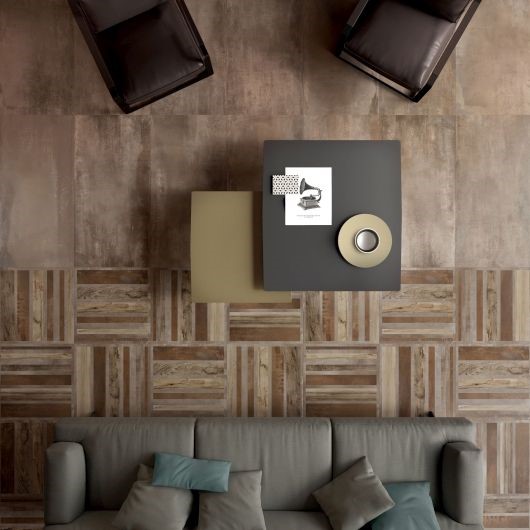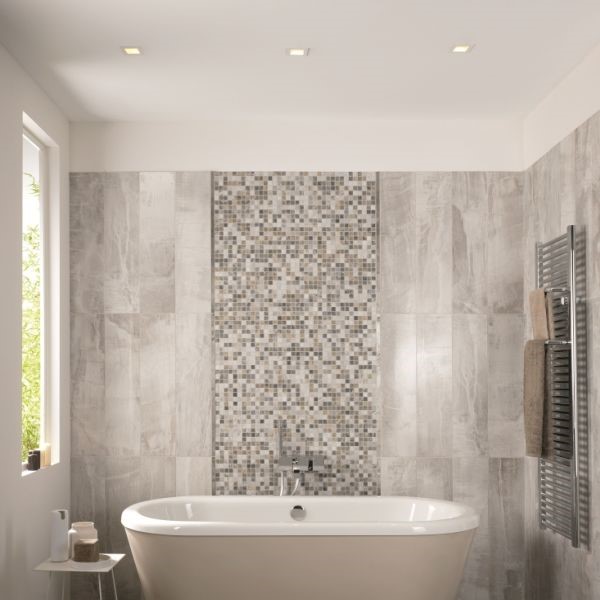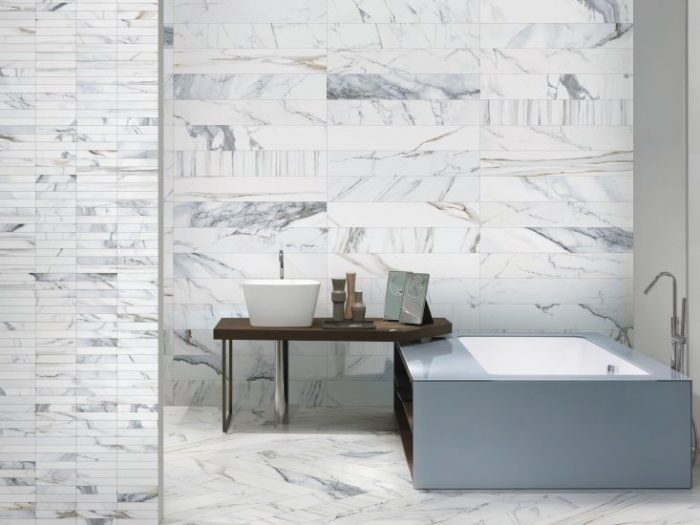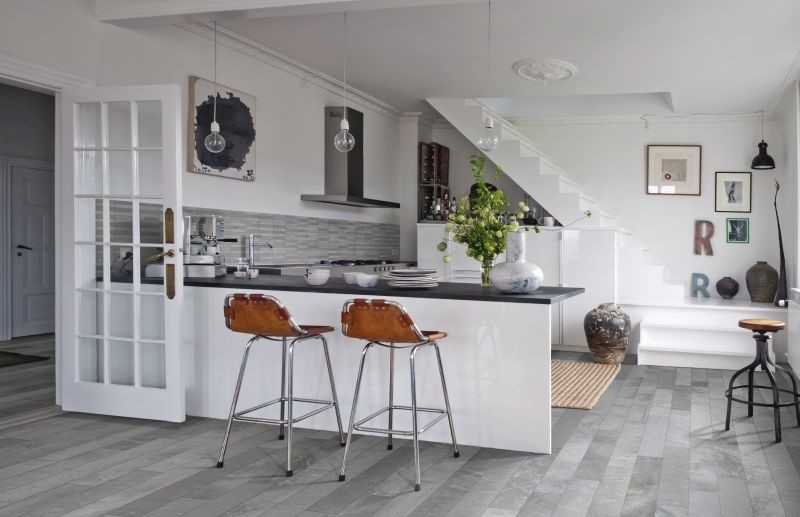When you’re redesigning or renovating your home, you might have some questions as to what you can and can’t do. Some of these questions, such as How to Make a Small Bathroom Look Bigger with Tiles, are perfectly reasonable questions that any interior designer might ask.
But then, there are the other questions, the ones you might consider too silly to ask but need answers to just the same. In the tile industry, one such question might be ‘Can you use floor tiles on a wall?’. At Roccia, we don’t consider any tile-related question too silly to ask, especially when it comes to your home’s interior design. However, we also understand how overwhelming it can be to make sense of the vast array of choice on offer today.
So, in this article we’ve endeavoured to answer some of those burning questions you might be simply too afraid to ask.

Can You Use Floor Tiles on a Wall?
Picture the scene: you have just entered the showroom of your favourite tile suppliers in Preston. You’ve come to peruse the ceramic wall tiles with your dream renovation project in mind, but on your way to the ceramic wall tiles, you pass the travertine and wood effect floor tiles and fall in love with the designs. You just know that they would look stunning on your walls but here’s the problem:
They’re advertised as floor tiles. You can’t possibly stick them on your wall.
Or can you?
The answer is actually fairly complicated. It turns out that there is a good reason for why the wall and floor tiles are separated, and it’s all to do with the weight of the tile.
The British Standards for Wall Substrate Maximum Weight of Tiling per m2 is what largely determines whether a tile can go on your floor, wall, or both. Here is the standard below:
Wall Substrate Maximum Weight of tiling per m2
- Gypsum Plaster 20Kg/m2
- Gypsum Plasterboard Direct (without a plaster skim) 32Kg/m2
- Plywood (WBP) Up to 30Kg/m2
- Lightweight Tile backing Boards Up to 40Kg/m2. (Dependant on type and thickness of the board.)
- Glass-reinforced Cement Sheets Up to 50Kg/m2. (Dependant on type and thickness of the board.)
- Gypsum Fibre Boards Approximately 35-40Kg/m2
As you can see, different types of wall can handle different weights of tile, so if you’re hoping that the floor tile of your dreams can be used on your walls, you should consult this guide before purchasing.
As well as the weight of the tile, you will also need to configure the weight of the grout and adhesive that you’ll be using to stick the tile to the wall. It is the combined total of all of this weight that decides whether or not your tile is going to be too heavy.
Can You Use Floor Tiles on a Shower Wall?
There is another big factor to consider when tiling your walls – especially when using floor tiles – and that’s where you will be tiling. Tiles can be somewhat porous, meaning that in wet rooms they could soak up some of that water content, adding to their overall weight. This means that when tiling your bathroom, you need to be extra careful to leave some weight spare.
If you’ve just realised that your tiles might be slightly over the British Standard, don’t worry; you can prepare your wall by adding tile backing boards to increase the safety and durability of your tiling.

Can You Use Wall Tile on a Floor?
Generally speaking, the answer to this one is ‘no’, but it all depends on the tile’s Coeffiecient of Friction (COF) and Porcelain Enamel Institute (PEI) ratings.
You wouldn’t walk on your wall, and tile manufacturers wouldn’t expect you to try, so this means that most of your standard wall tiles won’t take the weight of a fully grown adult, never mind the celebration party you’ll no doubt be hosting with family and friends on the completion of your latest renovation.
This is where COF and PEI ratings come in handy:
COF – Coefficient of Friction
COF is fairly self-explanatory once you understand what it stands for; it’s the rating which tells you how much friction a tile has, and this is very important if you want to avoid slipping on your nice new tiles.
For an interior floor tile, the minimum COF must be at least 0.50 to be deemed safe to walk on. If you have a pet or young child, or have mobility impairments, you may want to look for tiles with a higher COF.
Most wall tiles aren’t designed with COF in mind, because it’s not important if your wall is a bit slippy. The problems only arise when you start putting wall tiles with less than 0.50 COF onto your floors.
PEI – Porcelain Enamel Institute
PEI is not quite as straightforward as COF, but it is vital for understanding your tiles. PEI measures the hardness and durability of your tiles in five classes. Class 1 is suitable for walls only, whereas Class 5 is fit for heavy-duty foot traffic, such as in commercial settings. Because they are made of lighter, more fragile materials, you will find that most wall tiles will be in Class 1.
If you have any other questions about tiles, wall- or floor-based, we recommend that you visit us, your trusted tile suppliers in Bolton and tile suppliers in Preston. From either of our exquisite showrooms, you will find the tiles of your dreams, as well as the answers to those not-so-silly questions.






